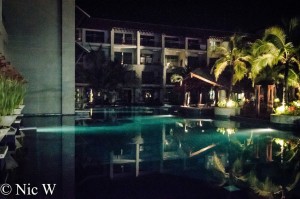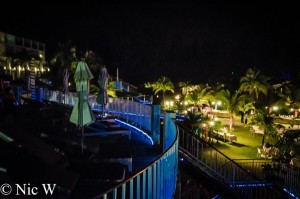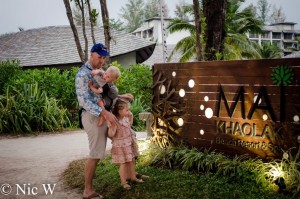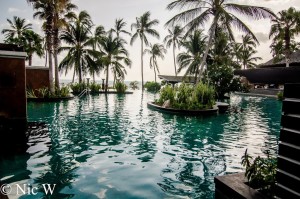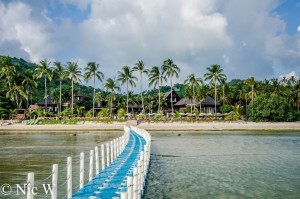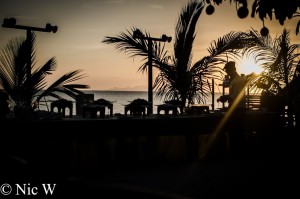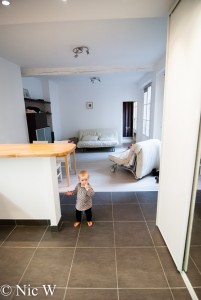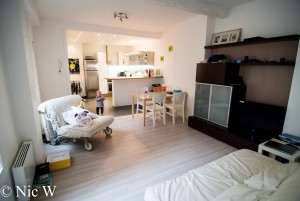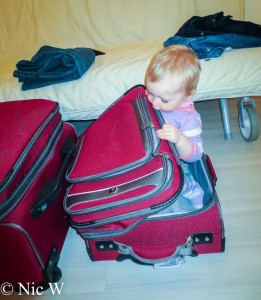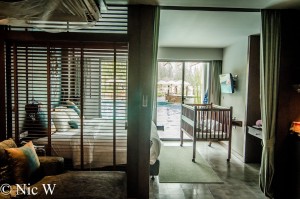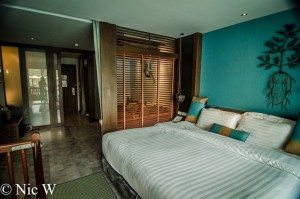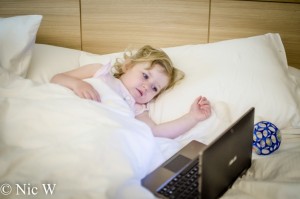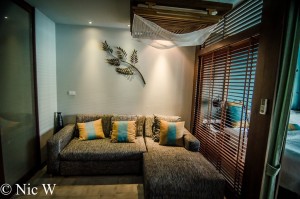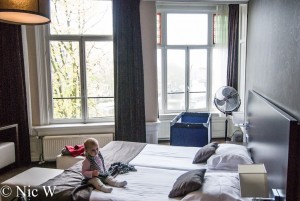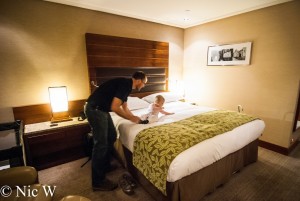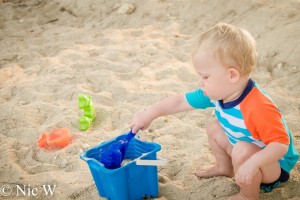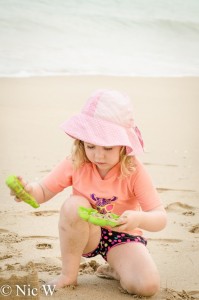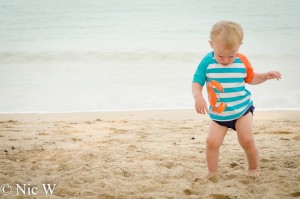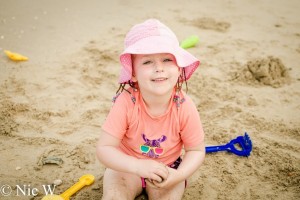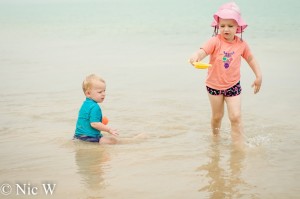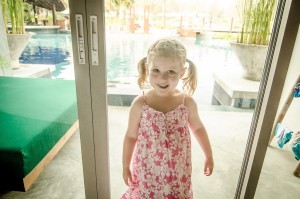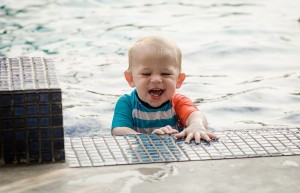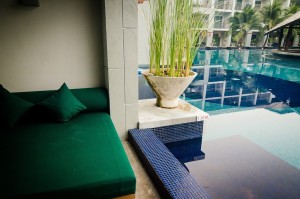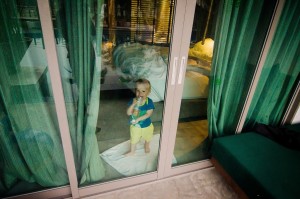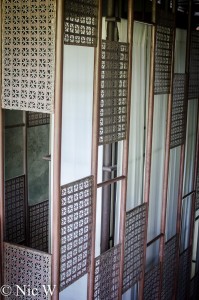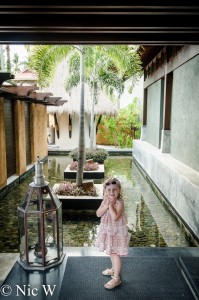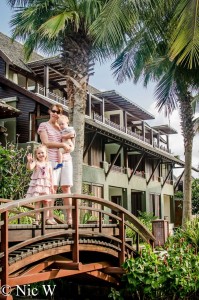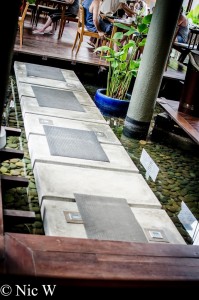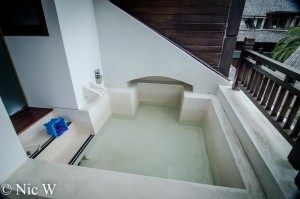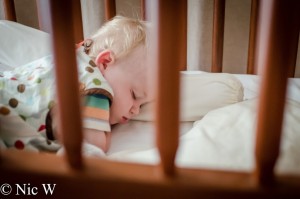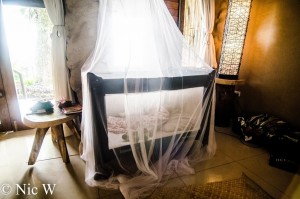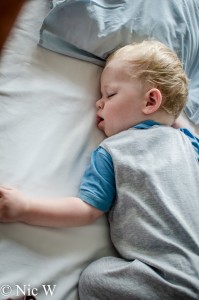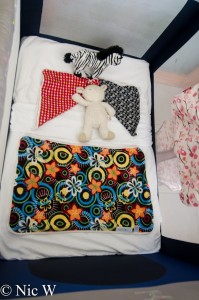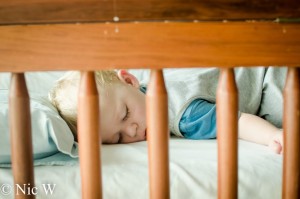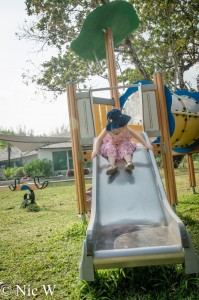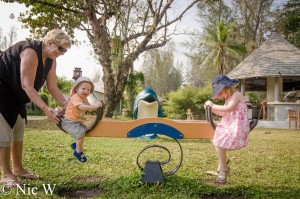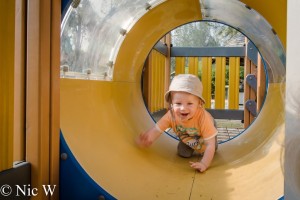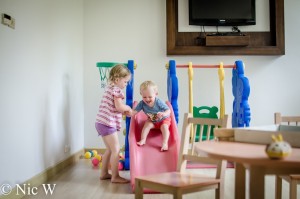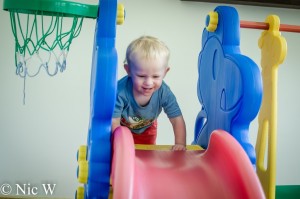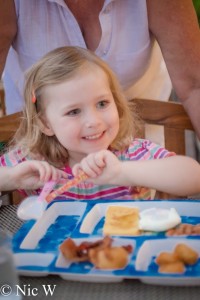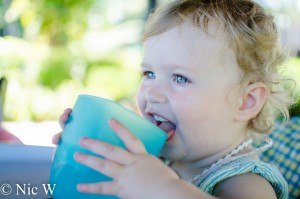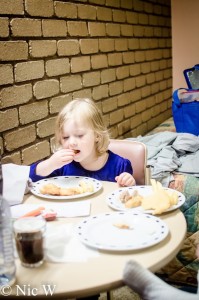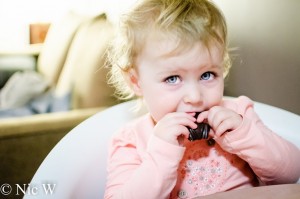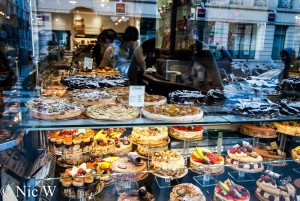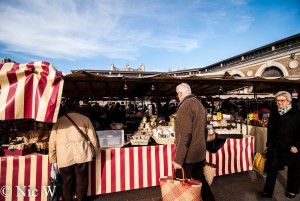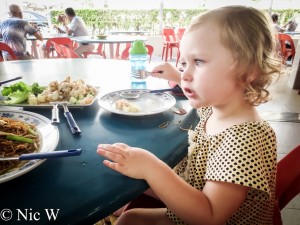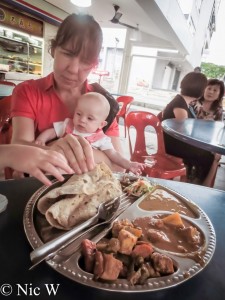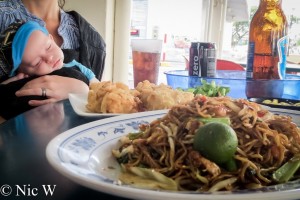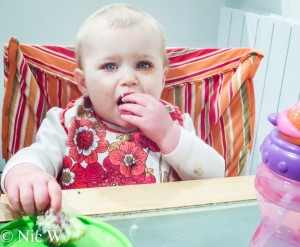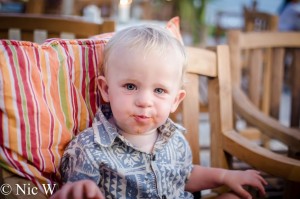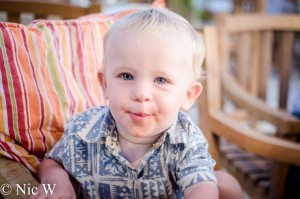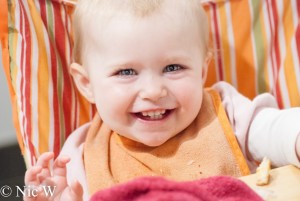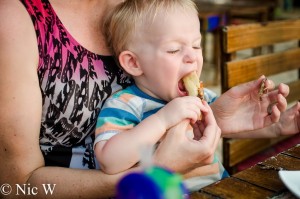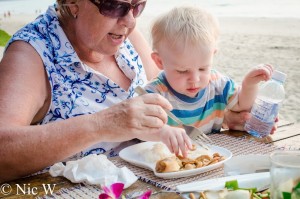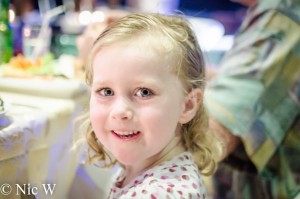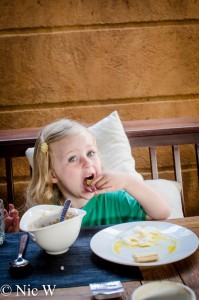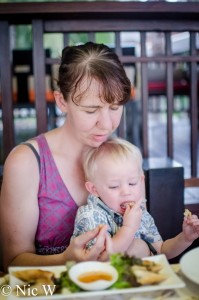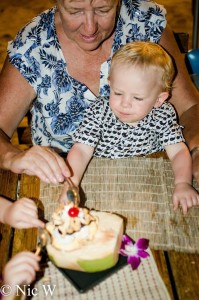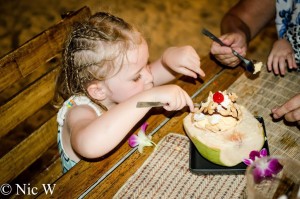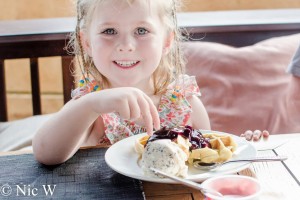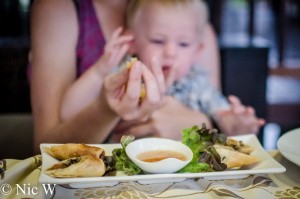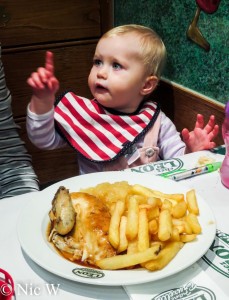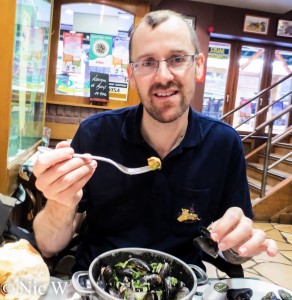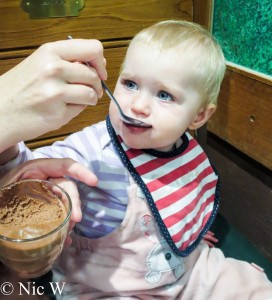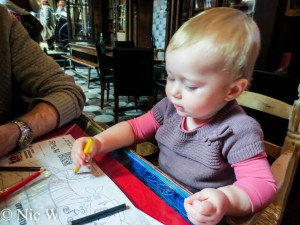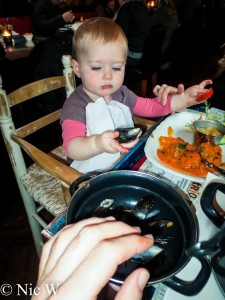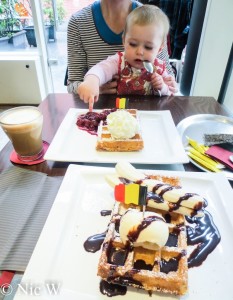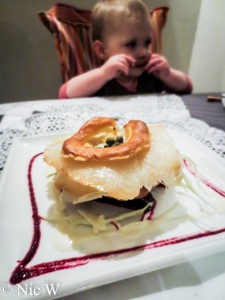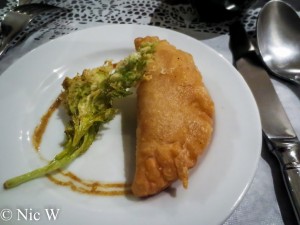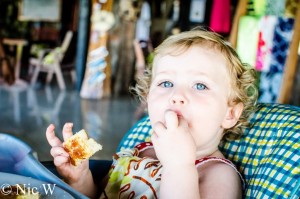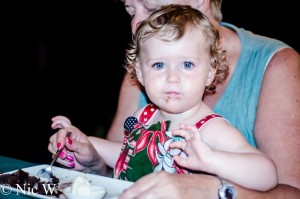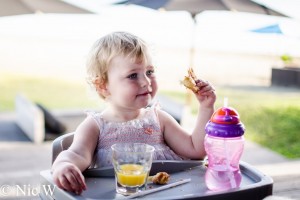This is the third post in my ‘tips for travelling with kids’ series. If you’d like to check out the previous posts here are the links:
Part 1 – travel planning, flying with kids, dealing with jet lag
Part 2 – train travel, car travel and using public transport
This time I’m talking about the all important topics of choosing accommodation that keeps you all happy, safe and comfortable and making sure the little members of the family are fed and happy!
Choosing Accommodation
Obviously budget is the big consideration when choosing accommodation for your holiday, but there are always a few other things we take into consideration (within the set budget) when travelling with the kids.
Facilities
Over our various travels we have stayed in a variety on different types of accommodation – big hotels, small hotels, resorts, self-catering apartments, Airbnb apartments, bed & breakfasts and motels. Sometimes it’s 4 or 5 star accommodation and sometimes it’s more on the cheap and cheerful (or not so cheerful – don’t let the kids touch anything) side. We try and pick up good accommodation deals and look for sales so that we get best value for money, but we always consider the facilities we will get for the price.
If we are staying somewhere for only a night or two, and will be spending most of the time out and about, we are happy to stay somewhere without too much space and cooking or washing facilities aren’t paramount. For longer stays, and holiday where we will be spending more time in our accommodation, we prefer something bigger and with more amenities. Being able to do our own cooking and washing is ideal, and more living space for the kids to play in is also preferred. If you are cooped up in a tiny hotel room for most of a day (or days) with a couple of small kids you might just go insane! If we know that we will basically just be sleeping in the accommodation, then somewhere to store our stuff, shower, and sleep is all we need.
We definitely try to book apartments with cooking facilities for stays of more than a couple of days or if we are staying in a resort, a slightly bigger room with at least breakfasts included so we have one less meal to worry about. If it is a relaxing, lay around the pool type holiday, then spending a little more for a nicer resort and larger room is more important. If we have a full schedule of sight-seeing and won’t be spending much time in the accommodation, then something smaller but with cooking facilities is more what we look for.
If we are travelling for several weeks, we very quickly get sick of eating out for every meal of the day. It also gets expensive quickly! We don’t need to have cooking facilities everywhere but having access to at least some cooking facilities every few days is ideal. Often it is just a hotel room with a bar fridge and a microwave, but many apartments have kitchenettes and lots of Airbnb houses and apartments come with fully equipped kitchens. By the same token, being able to wash our clothes every few days without having to spend valuable time at the laundromat is ideal. We rarely can take enough clothes for all of us to last a full trip so we try to wash when we can.
Most of our upcoming Europe trip is Airbnb houses and apartments, although we have several cities where we are staying in hotels, as that was what worked out to be the best option logistically or financially. For our 2012 Europe trip we rented a 1 bedroom apartment in Paris for the majority of the trip and had a few nights in hotels or bed & breakfasts while exploring areas outside of Paris.
It was nice to break up the apartment time with a stay in a hotel here and there, but for 2 months of travel we would have gone crazy without access to cooking and washing facilities and some space for Astrid to play in. We had some quieter days in Paris, when she was sick, or the weather was bad, and having a little extra room to play in and relax in was ideal.
Earlier this year we spent 16 nights in Thailand and it was split over 2 resorts (8 nights each). Both resorts were very nice and the rooms were quite spacious, even with 4 of us in them. We were getting a little sick of not having cooking facilities though by the end of the second week. Washing wasn’t an issue as we could take our clothes down to the beach and send them off for washing for a couple of dollars a kilo, but we missed having the ability to cook some meals and not have to go to restaurants 3 times a day!
Space/layout
As I mentioned above, we look for more space when we are spending longer in the accommodation or more time in the room. We also look for the layout of the rooms or apartments. If possible, it’s nice to have a separate sleeping and living area. Even if all 4 of us are sleeping in the same area or room, it’s preferable to have a separate lounge area for relaxing, playing and watching TV.
During the day often 1 kid will be napping while the other is awake, particularly now that Astrid is older and rarely has a day time nap, but her little brother still needs his sleep. Having a separate area means we can let her make a little noise while he is sleeping. It’s even more useful at night. The kids are usually asleep for the night fairly early, and we have a couple of hours before we are ready to head to bed. When travelling with small kids we don’t often do too many night-time tourist activities, so once the kids are in bed we unwind by watching TV or a movie, reading or if it’s me – editing a million photos from the day and writing blog posts! If we have a little extra space we can put the kids to sleep in their room and not disturb them with the TV or talking (or noise from cooking or washing). They don’t sleep in a silent house at home, so some noise is not a problem but some hotel rooms are very small and trying to watch TV while you have 2 sleeping children 1 metre from the TV can be tricky!
There are always times we all end up in a small room with no separate sleeping and living areas (most hotel rooms for example) and it’s fine, just not as relaxing. We usually wait til the kids are asleep and then watch TV or read quietly. Noise rarely seems to wake them (even when we’ve had loud neighbours in apartments and hotels) but it is much easier when we don’t have to worry about the noise level and can let them sleep undisturbed.
We deliberately rented a 1 bedroom apartment for our last Paris trip, so we had the living area to relax in at night. When choosing accommodation for our upcoming trip we tried to pick apartments with separate living areas and bedrooms, as there will be 4 adults as well as the 2 kids, and not everyone will be wanting to be quiet all evening. We also try to pick accommodation where the kids will be sleeping in a bedroom rather than the living area (many places have fold out sofa beds) so that we don’t disturb them once asleep or have to move them once they are sleeping.
It’s also useful to note that many hotel rooms and apartments can be very small. When you are travelling with a baby or toddler and are using a cot, the cot often takes up a large amount of floor space and can make moving around a room tricky. If you are taking your own cot, it is useful to know whether there will be sufficient space to set the cot up. We’ve ruled out many apartments based on the fact that we couldn’t get a portacot set up in them in a usable manner. Our two months in Paris was spent with Astrid’s cot wedged between our bed and the wall. This was fine, although it meant having to crawl over the bed to get to and from the cot or bed. We’ve also stayed in hotel rooms where we’ve had to pull the cot down when not in use as you could not move in the room with it up. It’s a little inconvenient but doable when it’s only a night or two.
Location
Location of our accommodation is very important to us. We don’t want to spend more on accommodation than we need to, but we often trade off location for cost. Before you book accommodation it’s useful to at least have a rough plan of what activities you want to do during your stay. It doesn’t have to be a detailed day-by-day itinerary, but a rough guide is helpful so you can work out where the best area to stay is. We don’t mind walking or using public transport to get to places we want to see during a day, but spending an hour or two at the start and end of every day on public transport is a pain with young kids. You really don’t want them grumpy and tired before you’ve even commenced your days sight-seeing!
If most things you want to see and do during your stay and in a smallish area, it pays to try and stay somewhere near there, or at least a short-public transport ride away. If activities are more spread out, then somewhere central, or at least closer to those things you are likely to visit more often makes sense. We also try and pick somewhere with good access to food options, since you don’t want grumpy kids who have been forced to travel far and wide to get breakfast or dinner.
If we are catching trains into a city then looking for accommodation not far from a train station (or at least a metro/bus connection from the central station) makes sense. If it’s a quick overnight stop somewhere, then we will preference staying near the train station and travelling into the city/tourist area for our sight-seeing as it means less moving of bags. If we are spending a few days somewhere, then it’s better to be near to where food and activities are located, even if it’s more of a hike from the train station.
In general airports aren’t very centrally located. So, if we are flying in somewhere, we don’t usually stay near the airport, and prefer to spend the time travelling from the airport to our accommodation and being nearer to things we want to do and see. The exception is if we are only staying one night and it’s easier (and cheaper) to stay further out of the city, leave our bags, and spend the time travelling into the city for our few hours (or day) sightseeing.
If we are planning a relaxing holiday, with lots of pool or beach time, then we don’t mind so much if the hotel or resort is a long distance from the airport as you are travelling this generally only at the start and end of the trip. As long as the pools, beach and restaurants are nearby, being 2 hours from an airport isn’t a big deal.
Location can also mean where your room is located within a hotel or resort. This is more important for holidays where you’ll be spending lots of time in a pool or at the beach. The resort might have everything you need but if you end up in a room 500m from the nearest pool or a 2km walk to the beach, it can be a giant pain when you have small kids to deal with. Little kids come with lots of stuff – and carrying kids, towels, buckets, spades, sunscreen, snacks and water to and from pools and beaches several times a day is a pain if you have a long way to walk.
When booking rooms it pays to research where different room types are located within a resort – there is usually good info on both the hotel/resort website and tripadvisor. Look for information on where different room types are in relation to pools and beaches and then pick a room type that suits your needs. One of the resorts we stayed at during our last Thailand trip had pool access directly from the room. This was amazingly convenient for both us and the kids and was worth the small extra cost per night. At other resorts we haven’t paid the extra for direct pool access as it’s been a far greater cost. It’s certainly lovely when you have it!
Many tripadvisor posts also mention specific room numbers so if you would prefer to be in a certain area of a resort you can request those room numbers. This won’t necessarily guarantee you the rooms you want, but it can pay to at least know how far you are likely to be walking with kids and gear to go swimming. You can also consider requesting to be on a ground floor room when possible, so you aren’t lugging babies and towels up and down stairs 15 times a day! Done this, it wasn’t fun…..
Kid-friendliness
Accommodation can be kid-friendly or so kid-unfriendly that you spend your entire holiday in a state of panic and hyper vigilance. We don’t necessarily stay in kid-friendly type resorts, in-fact we often prefer to go to places that aren’t overrun by kids. Knowing how kid-friendly your hotel, resort or apartment is likely to be is useful though.
Again tripadvisor is a great resource. If you are staying in a hotel or resort go and check out the comments from families (you can set the search to only look at reviews from families) staying in the same room type as you. While the ratings are useful, it’s the comments that are usually the most helpful. You need to read through and look at what things are likely to matter to you (usually based on the age of your kids and what things are issues for you and your kids). Often people whinge about something that is of no relevance to the age bracket our kids are in, or are things that just aren’t important to us. If you read through a few pages of comments you’ll get an idea of the sorts of things people think are great for their kids and things that you need to be aware of.
If you are renting through Airbnb do a similar thing with the reviews, paying specific attention to people who have stayed in the accommodation who have kids. An apartment or house may get rave reviews but be totally unsuitable for young kids. Alternatively, if people with similar aged kids have commented on how kid-friendly it was then you know you are on the right track.
All of this can help with deciding which accommodation to book. Once you actually arrive though, the reality can be quite different. Unlike your own home, that you have no-doubt child-proofed to some extent, hotels and apartments are not necessarily set up to deal with your kids and their curiosity. It’s a good idea to do a quick scan and move anything that looks breakable. Hotels are shocking for putting ‘pretty’ but breakable things like vases and candles where kids can get to them. Then have a look for potential dangers – things that can be knocked off shelves or fall onto small kids when grabbed onto; places small fingers can get stuck (gaps between bathroom and balcony doors are a common problem); and, things that might be dangerous for your kids – power points, cables, unlatched windows or doors. If the rooms have pool access or are ground floor with access to the pool, make sure you can keep them locked and the kids can’t reach the lock.
Safety standards can differ between countries and things that would not meet safety tests in Australia might be perfectly fine in other countries. We’ve stayed in hotels and resorts with balconies with gaps big enough for a 4 year old to get through, doors without latches and doors that can fit a whole baby hand or arm through the gap – leading to squished fingers. If you identify potential dangers as soon as you arrive you can decide if there is anything you can do to minimise the danger – push some furniture in front of door or window you don’t want kids accessing, put something in gaps you are worried about arms getting stuck in, or keeping doors pinned open etc. You can always try asking to move to a different style of room, this may or may not work, and obviously won’t work if you have rented a private apartment or house.
Dangers within a room or apartment are most problematic when you have babies and toddlers, they are curious and generally don’t understand when not to touch something. Pretty much your only options are to move things, remove the danger or keep a very close eye on your baby/toddler. Once your kids are older they can understand a little better not to touch certain things or to be careful on big steps, near balconies etc. You obviously still need to supervise closely, but it can be far less problematic.
Aside from dangers within a room, there can also be dangers within a hotel or resort. Often staircases can be hard to navigate for little legs, or have insufficient railings. Resorts near water mean you have to keep a constant eye on kids – not just when you are swimming but you often have to walk over bridges and around pools to get to other parts of the resort or restaurants. It can be a bit of a nightmare with small kids that like to run off or not hold hands. The resort we stayed at in Koh Samui, had all of these problems. Despite being marketed to families it was rather dangerous for small kids. We didn’t have any incidents but we had to be very vigilant and carry the kids pretty much everywhere.
The other things we’ve had issues with are cots. Australia has quite good guidelines for safe sleeping to minimise the risk of SIDS. Many other countries don’t seem to abide by these and we often find cots supplied with doonas, cot bumpers and large pillows. All things we’ve been taught to avoid in cots for babies. Generally we just remove the bumpers, pillows and doonas and let the kids sleep in their sleeping bag. We always make sure we take at least one of the sleeping bags they use at home and a light cot blanket. Both we use on planes if we are flying.
If you are travelling with a baby or toddler who still sleeps in a cot, then make sure you book a cot prior to arriving. We have repeatedly found that despite pre-booking portacots they are often not in the room or apartment when we arrive. Sometimes this is rectified quickly, other times there is a wait of hours (or days). This can mean popping an over-tired baby in the bed with you for awhile. It is never a big deal, just don’t always expect the cot to be there. If a cot isn’t being provided and you are taking your own this isn’t an issue and can make life easier. Portacots are big and heavy though and we tend to only take ours when travelling by car. For flying and train travel it is a hassle we prefer to avoid and we try to pre-arrange suitable bedding even if it’s an extra cot. For our end of year Europe trip we are taking a pop-up tent portacot for Soren to sleep in that is significantly lighter and smaller to carry than a traditional portacot. He has enjoyed his test sleeps in his tent, but I’ll report back how it goes over the 2 months he has to use it daily!
While I’ve talked about a lot of the child unfriendly things in accommodation, often we come across places that are the exact opposite – very child friendly! Things that make our stay a little easier are always welcome. Hotels, apartments or resorts that have kids play areas or even some toys are great! Even though we pack a few small toys and games, new toys are always fun, and it usually means kids are welcome and catered for. Some of the bigger resorts have kids play areas or kids clubs, which are great fun for little kids.
If hotels, rented apartments or bed & breakfasts are expecting lots of younger guests they often cater for them at meal times. The availability of high chairs and booster seats are great, and some even have special kids sections in their breakfast buffets, and kid-friendly selections for meals, and a selection of kid proof plates and cutlery. We’ve stayed in some smaller hotels and bed & breakfasts that also have high chairs available, plastic plates and are happy to provide foods the kids enjoy.
One of the aspects that makes the most difference to a stay is the friendliness of the staff. If they love having kids around and go out of their way to chat to the kids and help out tired parents in any way they can, it makes a stay much more pleasant and enjoyable.
Food, eating out and keeping the kids fed!
Everyone with kids knows that hungry kids are cranky kids! Keeping kids fed and happy is a top priority when travelling. If you haven’t already noticed the recurring theme in my posts, then here is my big tip – snacks. Lots of snacks! Always have snacks on hand or make sure you have somewhere to buy suitable snacks. This doesn’t mean you have to give the kids snacks all day long, but if you are stuck somewhere or there is a delay before the next meal, or you are just trying to keep kids entertained on a long flight or a big walk then snacks come in handy.
Useful snacks are fresh fruits, crackers, muesli bars, dried fruit and biscuits. We often buy things when out and about for the kids to snack on. Astrid spent many days in Paris snacking on a freshly baked croissant as we walked the city – her life is just so hard!!
Fussy eaters and allergies
Luckily our kids don’t have any food allergies and are relatively non-fussy eaters. They both have their moments though (like all small children) and some days won’t eat anything offered. but they are normal happy to give most things a go and are pretty easy to cater for. We also don’t have to be concerned about them eating anything that will result in an allergic reaction, so generally our life is pretty easy when it comes to food. On the odd occasion they have been unhappy with the food option available (usually due to random toddler fussiness) so having a stash of snacks like crackers and fruit handy has been useful.
If you have fussy eaters or kids with allergies you will want to pick restaurants and cafes that provide foods that you know your kids will eat and can safely eat, and have access to a supply of suitable foods/snacks.
Meal timing
It’s usually ideal to try and stick to meal times that your kids are used to at home – when at all possible of course. Trying to keep hungry kids entertained until 9am for breakfast when they are used to eating at 7am, is not fun! When staying in apartments or accommodation with cooking facilities it’s easy enough to do breakfasts, lunches and dinners whenever you want. It’s a little harder when you don’t have access to cooking facilities and are relying on eating out.
It always pays to know what time hotel/resort restaurants are open and what time nearby cafes and restaurants open. Our kids like to get up fairly early, so we are often down in the hotel restaurant for breakfast not long after opening. If they wake too early, having some snacks handy to tide them over until breakfast time usually works. Many hotels have bar fridges so we try and keep some fresh milk handy as both as toddlers have had a cup of milk when waking or before bed.
The upside of early breakfasts is that you can get out for your morning activities nice and early and often beat the crowds. People with older (or more cooperative) kids might get the luxury of the odd sleep-in!
If we have the option to provide our own breakfast, we generally do so on most days, both for convenience and to save money. Lunches tend to be more of a mixed bag. If we are out sightseeing for a whole day, we will have lunch out, or buy supplies to make a picnic lunch. If we are doing a morning and afternoon activity we often head back to our accommodation prior to lunch so the kids can nap and either have an early lunch before a sleep or a later lunch after they wake up.
Dinner can be tricky with small kids. At home our kids eat relatively early – 5 or 5.30pm, unless we are going out somewhere. Often when travelling there isn’t the option for dinner that early. Many restaurants don’t open until 6pm or even later (especially in Europe where 8 or 9pm dinners are the norm even for small kids). If we know we are going to be having a later dinner then we try and plan a later afternoon nap (or at least a rest if they don’t need to nap) so that we can keep them up later than their usual bedtime.
Astrid at 4 years, doesn’t often have a day time sleep any more, but will still have one when sick or we have a busy day. Quite often when we are travelling and have had full days with swimming or sightseeing she is happy to have a small nap (or falls asleep in a train/bus/in the stroller/ergo). It does mean bedtime gets pushed back a little but that is ideal when you want a later dinner anyway. Likewise Soren has been having 1 day sleep for quite awhile now, rather than 2 or 3, but will often have 2 naps a day when he has had busier days. At home we don’t encourage 4pm napping (all parents understand how fraught with danger this can be) but it works well when you want them up a bit later.
Of course sometimes the opposite happens and instead of sleeping or resting the kids decide to do neither, and are utterly exhausted by 5pm. This is often the reason we prefer not to go out for dinner, or at least not every night. Eating out and experiencing new foods and restaurants is one of the joys of travelling, but…….. keeping over-tired kids from wriggling, screeching and throwing their food on the floor because they are exhausted is just not fun for anyone. If we have the option to do our own dinner we do this fairly often so that the kids have an early night and can face up to another day of non-stop activities the next day. We’ve found that you can run them ragged during the day but mess with bedtime at your own peril!
It’s still nice to eat out sometimes though, and often if there is little option if you don’t have cooking facilities. This is where we sometimes resort to what we refer to as ‘hotel picnic’. The old hotel picnic is our fallback dinner position when kids are tired and cranky and we just don’t want to be out with them. It means getting some form of take away dinner and eating it in our hotel room. The kids absolutely adore hotel picnics and it means we avoid having to take them out, get them fed quickly and bathed and off to bed.
Hotel picnics can be some take away fish and chips, or often just something we find at a supermarket. Pre-packaged salads or pastas work well or we can buy bread, meat and cheese and make up sandwiches. Dips, cheeses and crackers or cut up vegie sticks make good light dinners too. In many cities we have travelled to we have found supermarkets with a good variety of quick meals available and many don’t require heating. If we have access to a microwave then we often do microwave dinners or can buy and heat a frozen lasagna. If we are planning to have a hotel picnic dinner then we often have a bigger lunch and the kids are more than happy to have a light dinner.
We often travel with a few plastic plates or picnic plates and some basic cutlery and knives so that it is easier to do quick meals in our hotel room. They also come in handy if we are out and about and want to buy a few things to make up a lunch or dinner. In France we often bought a fresh baguette, some butter, cheese and tomatoes and made some quick and tasty sandwiches up while out sight-seeing. It only cost us a few Euro and fed all of us easily!
Food and Water quality
We’ve never had an issue with food poisoning while travelling, but it definitely pays to be mindful of food and water quality. If I wouldn’t eat something then I certainly wouldn’t give it to the kids. Babies and small kids are even more likely to get food poisoning, due to their less robust immune systems. We are always pretty careful with water and stick to bottled water when recommended. If there is no issue with water then tap water is fine, but we are relatively cautious about water for drinking and teeth brushing.
We often eat from places other than hotel or large restaurants. In Singapore we always enjoy going to the Hawker’s markets for tasty and cheap food. If you pick places that have a high turnover and look popular then there generally isn’t an issue.
Part of the joy of travelling is experiencing new foods and eating what a lot of locals eat. While we are mindful of food poisoning (no one wants kids with gastro!) it doesn’t stop us from trying different places to eat and eating from places other than hotel restaurants and big chain cafes or restaurants.
Kid-friendly eating
Kid-friendly eating doesn’t necessarily mean going to restaurants aimed squarely at kids, or hanging out at fast food chains. It just means going somewhere that the kids won’t be out of place. We normally skip the fine dining establishments when we have the kids in tow, and pick somewhere that it won’t matter too much if a little bit of food ends up on the floor.
If there is at least something on the menu they’ll eat then we are good to go. We often take our fold-up ‘little beetle’ high chair with us when travelling so we can strap in the baby/toddler when restaurants don’t provide high chairs. It was well used for Astrid when travelling through Europe and Soren has used it a few times on travels, but at almost 2 he doesn’t really need it any more.
We also try to have some plastic cutlery and the kids water bottles with us to make things easier, but at almost 2 and 4 they are now coping fine with normal glasses and cutlery.
On the right day, both kids are adventurous eaters. On the wrong day you are lucky to get anything into them. We generally order at least one thing we know they are going to eat, and will experiment with other dishes. They are usually happy to eat what we do (often with a little less chili though) so we order a few dishes and all share, or share a meal between the two kids that we know they both like.
If a restaurant or cafe has a kids menu that is often a good option, but really they are mostly all fried fish or chicken and chips, or maybe spaghetti. We found some amazing ‘kids meals’ in Belgium and the Netherlands on our last trip. Really interesting versions of the adult fare, and not a chip in sight. If only we had the same quality here!
Chips and fried fish or nuggets are fine once in awhile but very repetitive and not overly nutritious when you are away for weeks on end. There are times that the kids end up eating chips more regularly than we’d like, but we do try to sneak some vegies in there when we can. When you away for a short time, then eating fun foods is great but it’s not so ideal over the period of weeks or months. Luckily they are pretty happy to try different meals and share with us so we can usually try and balance out the meals, even if the vegies to have to be dipped in sauce some nights!
For us kid-friendly eating out, is making sure we eat at a time that is practical for the kids, picking something we are fairly sure they will eat but getting them to try other things too, and not expecting them to stay still for too long. A quick dinner or walks between courses and we have happy kids, expecting them to sit still for 2 – 3 hours for multiple courses will never work and will end in tears for at least one of us.
That’s my take on picking accommodation and keeping your little ones fed when travelling. Feel free to comment if you have any questions or have some insight or experience of your own. I love to hear other peoples tips and advice too! The next post will cover how to dress kids for the weather when travelling, and what to pack.


